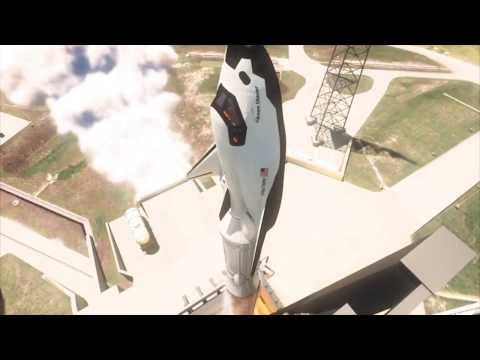How to Build A Lunar Base
How to build an advanced Moon Base United States, Europe, Arab Emirates, Russia, India, China, Japan… Suddenly, everyone wants to go to the Moon. But why? What has suddenly made our satellite so popular after an oblivion that lasted more than half a century? You may recall that since 1972, as public and political interest in space waned, the Moon was visited by only a handful of robotic missions; while human presence was limited to low-Earth orbit missions, with a focus on the International Space Station. Why does everyone now seem bewitched by the Moon again? The answer, very trivially, could be this: only now the technological progress allows us to do it, and to do it so cheaply that it is convenient to exploit its resources! If you think about it, it is a bit what happened at the beginning of the last century with the exploration of Antarctica, when there was a race to the South Pole that then was also abandoned for more than 50 years; until suddenly the most evolved countries started to populate those hostile and cold lands with permanent bases with more or less scientific aims. Then too, as today with the Moon, the moment came when technology – motor vehicles, air transport, radio communications and more – made it possible to do what had only been dreamed of until recently. In the same way, nowadays we have the feeling that setting foot on the Moon and building bases there is no longer a scientific dream, but only the necessary application of what we now know how to do. It seems easy to say. But where will we live? How will we survive in that hostile environment? With what energy? And what will we eat? It’s good to specify immediately that when we talk about Lunar Base we refer to a real settlement. Something more complex, therefore, than what NASA has in mind with its Artemis Base Camp, or than what China, Europe, Russia or Japan have in mind for their respective projects of human settlement; projects that at the moment are obviously all oriented to minimalist solutions, and calibrated on missions that for a few more years will certainly not exceed in complexity. Let’s say that our goal is to describe the structure of a settlement inhabited by at least a dozen astronauts, as it can be realized probably not before 2040. Building such a base will indeed be the greatest challenge humanity has ever undertaken. But where to place it? Where on the lunar surface? Since the beginning of the space age, there have been multiple proposals on how and where to build a lunar colony. The poles of the Moon are of interest primarily because of the presence of water ice in the perennially shadowed areas, with even surface deposits estimated at billions of tons. Which will provide the colonists with a constant source of water, which could even be used to produce fuel and breathable oxygen. A strict recycling regime will be required to ensure that waste is minimized, and composting toilets will most likely be used instead of traditional ones. The compost could then be mixed with regolith to create fertile soil. This would be essential since lunar colonists would need to grow much of their own food to reduce the number of shipments that would need to be sent from Earth. As part of a closed ecosystem, plants would recycle organic waste and turn carbon dioxide into oxygen. Astronauts on the International Space Station already eat lettuce grown in their small on-board greenhouses, but more studies will be needed to determine the best way to grow crops in the regolith metal mix. And what about the dwellings, labs, greenhouses – what materials will they be made of? There have also been numerous proposals for the type of housing modules, with designs evolving as materials science has progressed. However, the main focus for mission planners is on cost and efficiency. Generally, it is expected that early base modules will need to be built on Earth, but then a manufacturing process will need to be initiated that can take advantage of local resources. Alternatively, inflatable habitats have always been a favorite among designers for both light weight and ease of use. The construction of an inflatable is determined by its intended use, however common elements include woven layers of highly durable materials such as Kevlar and Mylar around a flexible air bladder that is used to hold an atmosphere. Different shapes and sizes, from the “dome” to the “cuboid” will be able to mix and match to create environments of thousands of cubic feet of living and working space. However, these inflatable modules cannot effectively protect humans from harmful radiation, temperature changes or micrometeorite strikes. Therefore, some private industries are already designing robots capable of using the technique of “3D printing”, using as a material regolith dissolved in small ovens, a kind of “shell” to be put around each structure. The simplest and safest solution, however, remains to cover the pressurized modules with a protective layer of regolith about half a meter thick. There is an abundance of this material, as the surface of the moon is covered with a layer ranging in thickness from a few centimeters up to 10 meters. “BE sure to join the Insane Curiosity Channel… Click on the bell, you will help us to make products of ever higher quality!” The question of course is how this loose material can be consolidated into a usable structure. There are extremely high costs involved in getting any equipment to the moon, let alone heavy traditional construction equipment. Any feasible construction method should therefore not include large machinery. On a conceptual level, 3D printing as a construction technology could be a possible fabrication strategy, as material is only added locally and incrementally in small quantities. This is all if one did not want, as is desired by many, to completely bury the structures, digging caves that would protect against both radiation and micrometeorites. This could be done by sending an automatic digger controlled by the Earth able to excavate the environments and to reinforce them with the application of a kind of cement, possibly obtained with the materials present on site. This would then be followed by the application of porous insulating material by human technicians and finally the insertion of sealed modules into these spaces. As an alternative to excavations, it has also been proposed, and this seems to us the best hypothesis, the exploitation of cavities left free by the flow of lava. Ancient lava tubes beneath the lunar surface exist and can be used by settlers. Natural cave systems allow for large-scale settlements, plus they can be easily sealed, allowing for pressurized habitats. Researchers have found that compared to terrestrial lava tubes that reach 10-30 meters in diameter, those found on the Moon can measure kilometers. And not only do they protect from cosmic and solar radiation, and shelter from meteorites, but they also offer a temperature-controlled internal environment, not subject to variations between night and day. On Earth, groups of astronauts are already practicing driving machines and rovers in lava tubes discovered in Lanzarote, in the Canary Islands. “Tell me your impression, does it seem reasonable that such a base could be built by 2040?” Where would you get all the energy needed to build and operate such a facility? Yes, a lunar base obviously needs a source of energy to maintain conditions suitable for life, to communicate, and to carry out its manufacturing or research activities. Solar power can be a relatively inexpensive source, especially since many of the raw materials needed to build solar panels can be mined on site. However, the long lunar night (14 Earth days) is an obstacle that at the moment leaves the use of a nuclear fission reactor preferable. Further down the road, inspiration can be taken from Norway, where giant mirrors placed high on a mountain overlooking the city of Rjukan have been radiating sunlight since 2013 onto an area of the city’s central square that would otherwise be gray and cold all winter. Researchers hope to do something similar on the Moon. Light from high peaks could be funneled directly into craters, he says, where it would heat ice and turn it into steam. From there, condensed water would be transported to a processing plant and split by solar electricity into hydrogen and oxygen. These gases could then be stored and used as propellants or channeled through fuel cells to provide power. And how would people move around the base? Base occupants will also need to move locally to transfer materials from one module to another and over long distances to conduct scientific research. Possible solutions include many variations, from small open rovers to pressurized mobile laboratories. Rovers are useful if the terrain is not too rugged. To date, the only non-automated rovers that have operated on the lunar surface are those of the Apollo program, but a wide variety of means for rapid movement on the regolith are being designed by numerous space agencies. What about transportation of humans and goods to and from Earth? For long-term sustainability, a space colony should be self-sufficient or nearly so. Mining and refining lunar materials for use on Earth or elsewhere in the solar system could be a good source of sustenance, given also the lower energy cost required than on Earth to launch products into space. A lunar base will therefore need efficient means of transporting people and goods between Earth and the Moon and subsequently between the Moon and other destinations in interplanetary space. One advantage of the Moon is its relatively weak gravitational field, which makes it easy to launch objects toward Earth. The absence of an atmosphere is both an advantage and a disadvantage – there is no resistance to launch, but for example, it is impossible to use parachutes to slow the descent to the Moon, making it necessary to use fuel to brake. A possible alternative for cargo is to surround the cargo with shock-absorbing systems – balloons or lightweight materials as has often been tried in Martian missions. Other possibilities for launching material from the Moon to outer space are the electromagnetic catapult (mass driver), which is a track on which a vehicle is electromagnetically accelerated, and the space elevator, to transport people and cargo to a space station located at a Lagrangian point between the Moon and Earth. But in this case we are obviously talking about a quite remote future Other economic opportunities include tourism, the ability to produce materials in sterile, vacuum and low gravity environments, research and handling of potentially hazardous materials on Earth, and long-term storage of nuclear waste. Of course, pure research would also be highly profitable. By studying the effects of low gravity on the human body, astronauts will be better prepared to deal with the effects of long-duration space travel, missions to Mars, and other bodies where low gravity is a reality. These studies could also help pave the way for the creation of colonies on other planets or satellites… The far side of the Moon also offers serious opportunities for all types of astronomy. Since it faces the Earth, the far side of the Moon is free of radio interference, making it a prime location for radio telescopes. The final important consideration for any future lunar colony is health and safety. The potential risks of exploration are well documented . We have difficulty recovering the sick in inaccessible places like Antarctica, where medical support is limited in the summer months and virtually nonexistent in the winter months. This suggests that a lunar base should be medically self-sufficient, requiring more weight to be sent to the moon in the form of medical equipment and trained personnel. Ultimately, we have the technology to make this feasible within a couple of decades. It’s no longer a matter of science, just political will. What do you guys think?













